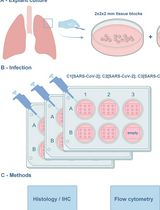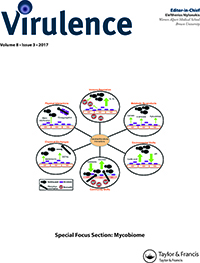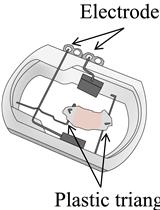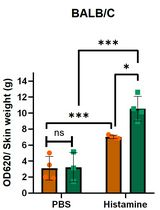- EN - English
- CN - 中文
Ex vivo Model of Human Aortic Valve Bacterial Colonization
人类主动脉瓣膜细菌定植离体模型
发布: 2017年06月05日第7卷第11期 DOI: 10.21769/BioProtoc.2316 浏览次数: 7835
评审: Valentine V TrotterJose Antonio Reyes-DariasAnonymous reviewer(s)

相关实验方案

用于研究肺部感染与免疫反应的离体肺组织培养模型,以 SARS-CoV-2 为 RNA 病毒研究示例
Elena V. Maryukhnich [...] Elena J. Vasilieva
2025年12月20日 684 阅读
Abstract
The interaction of pathogens with host tissues is a key step towards successful colonization and establishment of an infection. During bacteremia, pathogens can virtually reach all organs in the human body (e.g., heart, kidney, spleen) but host immunity, blood flow and tissue integrity generally prevents bacterial colonization. Yet, patients with cardiac conditions (e.g., congenital heart disease, atherosclerosis, calcific aortic stenosis, prosthetic valve recipients) are at a higher risk of bacterial infection. This protocol was adapted from an established ex vivo porcine heart adhesion model and takes advantage of the availability of heart tissues obtained from patients that underwent aortic valve replacement surgery. In this protocol, fresh tissues are used to assess the direct interaction of bacterial pathogens associated with cardiovascular infections, such as the oral bacterium Streptococcus mutans, with human aortic valve tissues.
Keywords: Streptococcus mutans (变形链球菌)Background
The oral pathogen Streptococcus mutans is considered the major etiological agent in dental caries and can also be associated with extra-oral infections such as infective endocarditis (IE) (Banas, 2004). IE is generally initiated by a lesion of the heart valve endothelium which leads to the formation a sterile thrombus mainly composed of platelets, inflammatory cells, fibrin and other extracellular matrix (ECM) proteins (e.g., collagen, laminin) (Que and Moreillon, 2011). Other cardiovascular malignancies, such as calcific stenosis and atherosclerosis, can also cause tissue damage leading to the exposure and remodeling of ECM proteins (Yetkin and Waltenberger, 2009). This environment then provides suitable targets for colonization by different pathogens capable of interacting with host components. Thus, the development of relevant tools and experimental models may allow us to understand better how pathogens interact with heart tissues. Based on a previous protocol established by Chuang-Smith et al., 2010 using aortic heart valves from pigs, we developed an ex vivo tissue adherence assay using human heart valves obtained from patients that underwent aortic valve replacement (Freires et al., 2016). While this model does not reproduce the immunological responses and other host factors associated with the disease, it provides a relatively inexpensive system to assess the capacity of a given organism to directly interact with human heart valve tissues. Furthermore, while this model requires a close collaboration with a cardiac surgery unit, this type of surgery (i.e., aortic valve replacement) is routinely performed at health science centers in developed countries (Yetkin and Waltenberger, 2009).
Materials and Reagents
- Sterile specimen containers (Fisher Scientific, catalog number: 16-320-730 )
- 12-well tissue culture plates (Corning, Falcon®, catalog number: 351143 )
- Sterile culture tubes (4 ml) (Fisher Scientific, catalog number: 14-956-3D )
- Microcentrifuge tubes (1.7 ml) (Fisher Scientific, catalog number: S348903 )
- Glass scintillation vials (20 ml) (Sigma-Aldrich, catalog number: Z253081 )
- Sterile culture tubes (15 ml) (Fisher Scientific, catalog number: 14-956-6D )
- Desired bacterial strain(s) (e.g., Streptococcus mutans OMZ175)
- Extirpated heart tissues
- EGM-MV Bullet Kit (Lonza, catalog number: CC-3125 )
- Gentamicin (Sigma-Aldrich, catalog number: G1397 )
- Brain heart infusion medium (BHI) (BD, BactoTM, catalog number: 237500 )
- Hank’s balanced salt solution (HBSS) (Thermo Fisher Scientific, GibcoTM, catalog number: 14025092 )
- Erythromycin (Sigma-Aldrich, catalog number: E5389 )
- Kanamycin (Sigma-Aldrich, catalog number: K1377 )
- Sodium chloride (NaCl) (Avantor® Performance Materials, J.T. Baker®, catalog number: 3628-01 )
- Potassium chloride (KCl) (Avantor® Performance Materials, J.T. Baker®, catalog number: 3045-01 )
- Sodium phosphate dibasic (Na2HPO4) (Avantor® Performance Materials, J.T. Baker®, catalog number: 3827-01 )
- Potassium dihydrogen phosphate (KH2PO4) (Avantor® Performance Materials, J.T. Baker®, catalog number: 3246-01 )
- Paraformaldehyde (Sigma-Aldrich, catalog number: P6148 )
- Glutaraldehyde (Sigma-Aldrich, catalog number: 340855 )
- Sodium cacodylate trihydrate (Sigma-Aldrich, catalog number: C0250 )
- Agar (Fisher Scientific, catalog number: BP1423 )
- Fetal bovine serum (FBS) (Sigma-Aldrich, catalog number: F0392 )
- Hydrocortisone
- Bovine brain extract
- Human recombinant epidermal growth factor
- 1x phosphate buffer solution (PBS) (see Recipes)
- Fixative solution (see Recipes)
Equipment
- Biosafety cabinet class 2 (Nuaire, model: Labgard ES Energy Saver Class II, Type A2 , catalog number: NU-425-600)
- 3 mm skin biopsy punch (Acuderm, catalog number: P325 )
- Stainless steel forceps (Sigma-Aldrich, catalog number: Z168696 )
- Centrifuge (Thermo Fisher Scientific, Thermo ScientificTM, model: HeraeusTM MultifugeTM 1 S-R )
- Vortex
- Motorized pestle (Kimble Chase Life Science and Research Products, catalog number: 7495400000 )
- pH meter
- Rocker (Reliable Scientific, model: 55D )
- CO2 incubator (VWR; model: 2325 )
- Zeiss-Auriga focused ion beam field emission scanning electron microscope (FIB-FE-SEM)
- Gatan Erlangshen digital camera
Procedure
文章信息
版权信息
© 2017 The Authors; exclusive licensee Bio-protocol LLC.
如何引用
Avilés-Reyes, A., Freires, I. A., Rosalen, P. L., Lemos, J. A. and Abranches, J. (2017). Ex vivo Model of Human Aortic Valve Bacterial Colonization. Bio-protocol 7(11): e2316. DOI: 10.21769/BioProtoc.2316.
分类
微生物学 > 微生物-宿主相互作用 > 离体模型
细胞生物学 > 组织分析 > 生理学
您对这篇实验方法有问题吗?
在此处发布您的问题,我们将邀请本文作者来回答。同时,我们会将您的问题发布到Bio-protocol Exchange,以便寻求社区成员的帮助。
Share
Bluesky
X
Copy link














